Introduction: In this article – to help celebrate Valentine’s Day – Gena Philibert-Ortega shows some examples of valentines our ancestors sent during WWII. Gena is a genealogist and author of the book “From the Family Kitchen.”
February 14th is a day for valentine cards, candies, and gifts. But what happens when loved ones are away fighting in a war?
During World War II, Valentine’s Day was celebrated – but it looked a little different than in the past. The National World War II Museum explains:
“Servicemen fighting overseas wrestled with homesickness as they endured dreadful conditions and faced constant danger, while stateside sweethearts and family members agonized over the fate of loved ones in the Armed Forces.” (1)
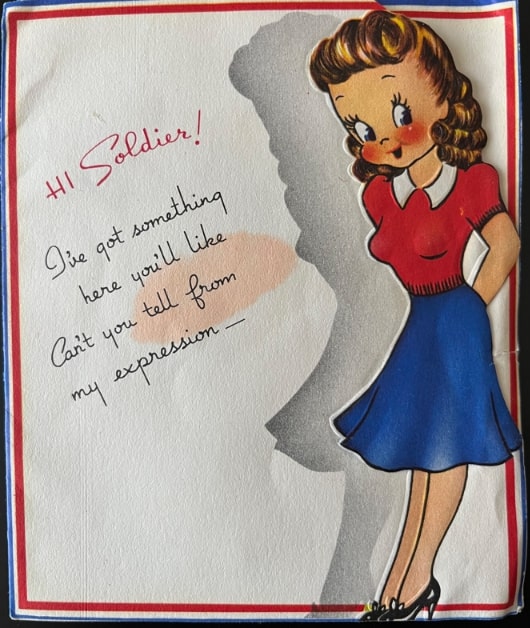
So, the valentines exchanged reflected patriotism, hope, and love.
Valentine Cards in the Newspaper
Military themes were incorporated into valentine cards that family, friends, wives and girlfriends could mail to their loved ones serving domestically or overseas. We can view some of these cards by searching historical newspapers, such as GenealogyBank’s Historical Newspaper Archives, for the WWII years (for the U.S., 1941-1945).
WWII-era newspaper articles discussed the changes in valentine cards, and illustrated the articles with photos and verses from available cards. Here are some examples from a 1942 issue of the Plain Dealer. The image on the card found on the bottom left states on the cover:
“A valentine for one swell guy! I’m falling in a tailspin, Boy – And if you won’t be mine –” The inside proclaims: “I’m gonna lose control and be a ‘cracked up’ valentine.”
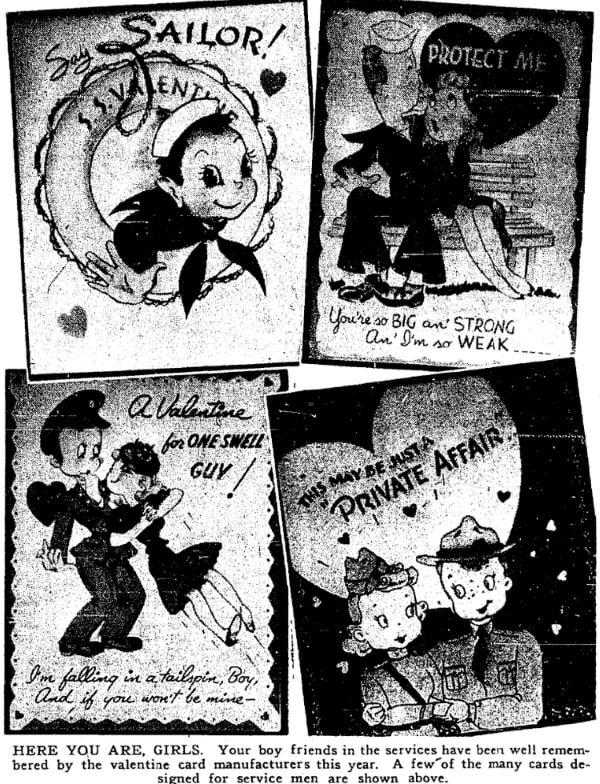
This 1943 New Orleans Item newspaper article states that thousands of special valentines marketed toward service people were on sale in the city. Valentines for service men and women to buy and those for civilians included hearts, puns, and references to the times – including one mentioned in this newspaper article that refers to rationing (food and items such as gas and tires were rationed during World Wat II):
“There’s a ceiling on this and that – they haven’t missed a thing, So honey, let’s get busy soon, they’ll ration love by spring.”
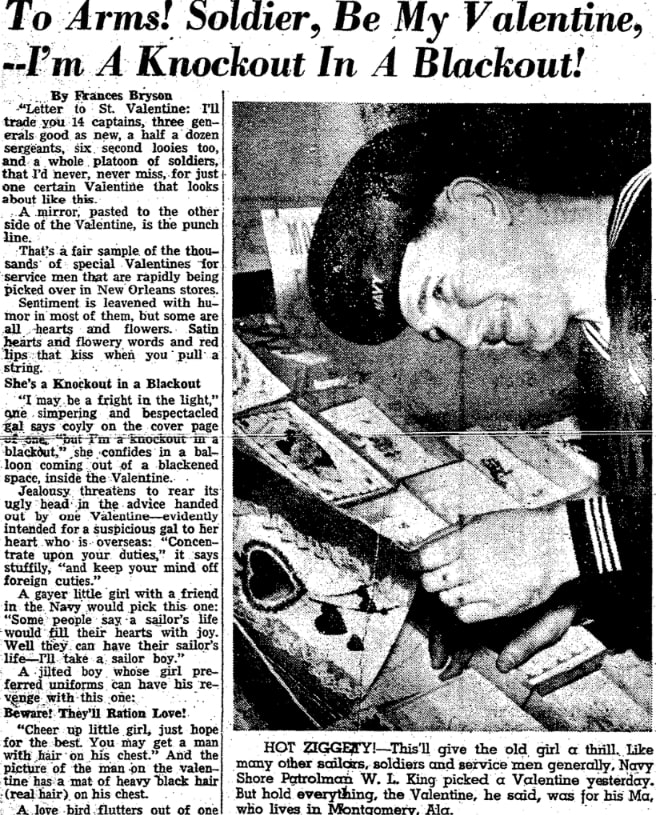
This 1944 Erie Daily Times newspaper article includes some WWII-inspired options.
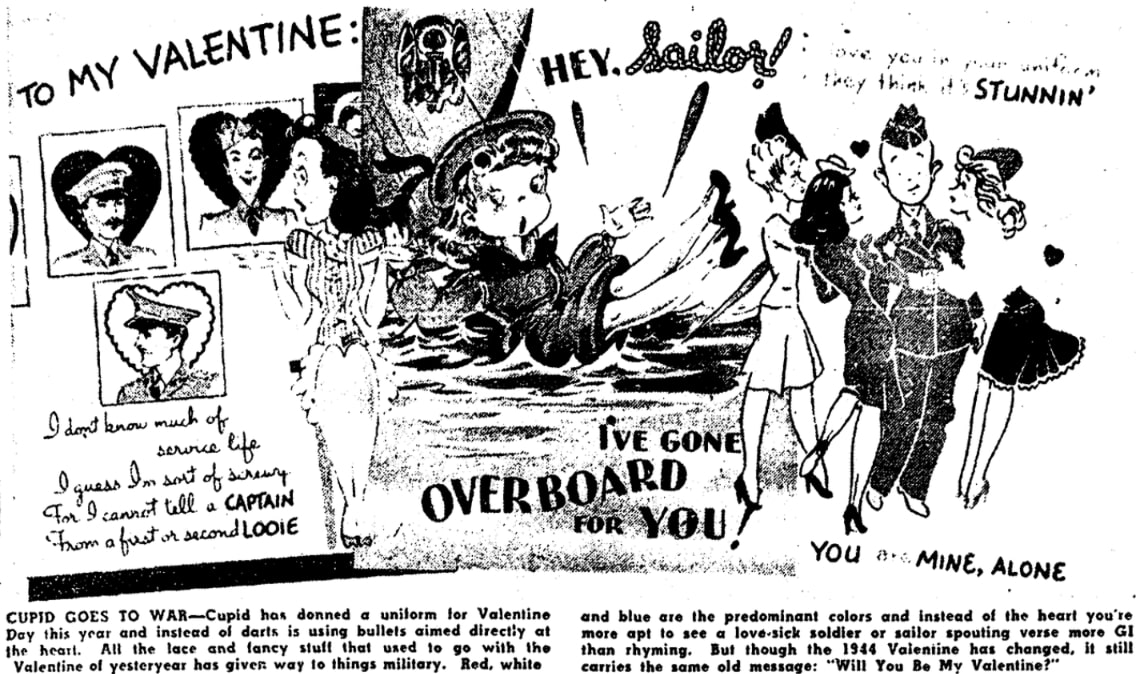
This photo caption reads:
Cupid goes to war – Cupid has donned a uniform for Valentine’s Day this year and instead of darts is using bullets aimed directly at the heart. All the lace and fancy stuff that used to go with the valentines of yesteryear has given way to things military. Red, white, and blue are the predominant colors and instead of the heart you’re more apt to see a love-sick soldier or sailor spouting verse more GI than rhyming. But though the 1944 valentine has changed, it still carries the same old message: “Will You Be My Valentine?”
Valentine Telegrams
We associate Valentine’s Day with paper greeting cards, but during World War II you could send a telegram. In years past, singing telegrams could be used to convey love – but as this 1942 Jackson Citizen Patriot newspaper article remarks, they would not be sent in 1942 for “obvious reasons.”
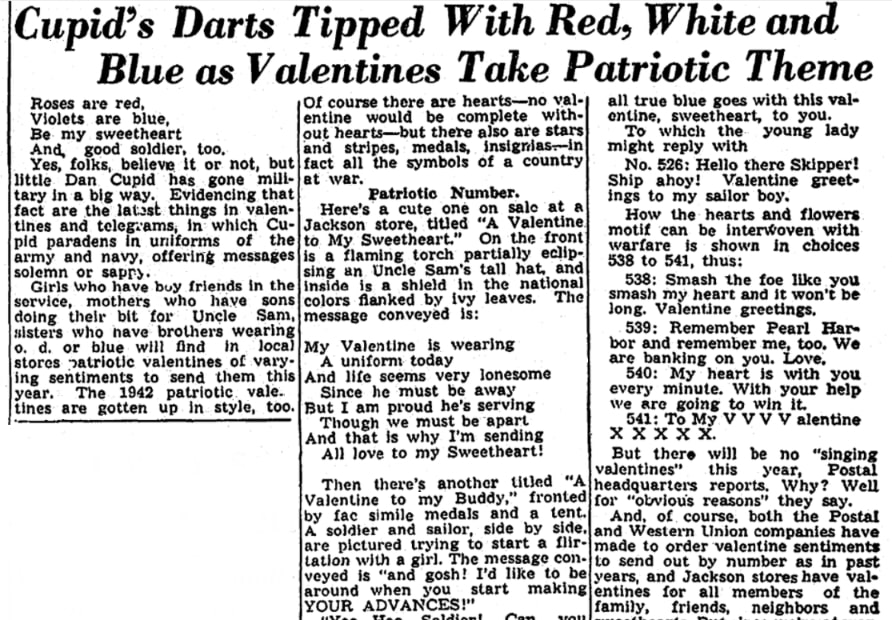
Those sending telegrams could choose from prewritten stock messages that reflected the era. According to this Jackson Citizen Patriot article:
The Jackson office of the Postal Telegraph Co. expects to have on hand some special wartime telegraphic valentine greetings that have just been announced at the New York headquarters of the company.
The sender would pick a number and the corresponding message would be sent over the telegraph wire. A few war-time inspired messages included:
#539: Remember Pearl Harbor and remember me, too. We are banking on you.
#540 My heart is with you every minute. With your help we are going to win it.
Happy War-Time Valentine’s Day
Valentine cards during the World War II years spanned the gamut from the traditional to the humorous to ones that took on a military theme.
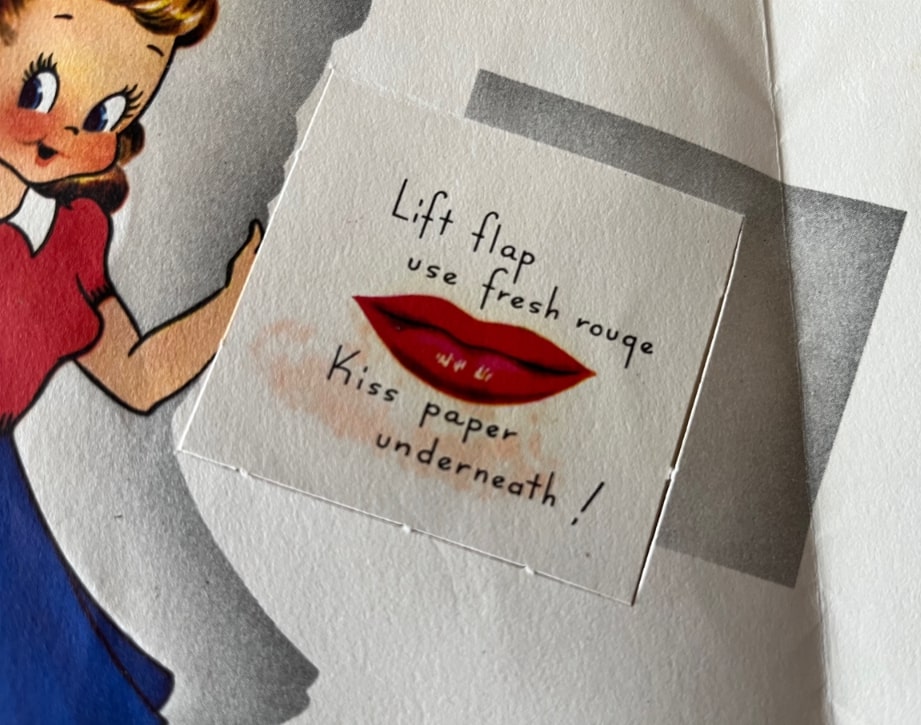
Couples separated by the war had their choice of card types to convey their feelings during this time.
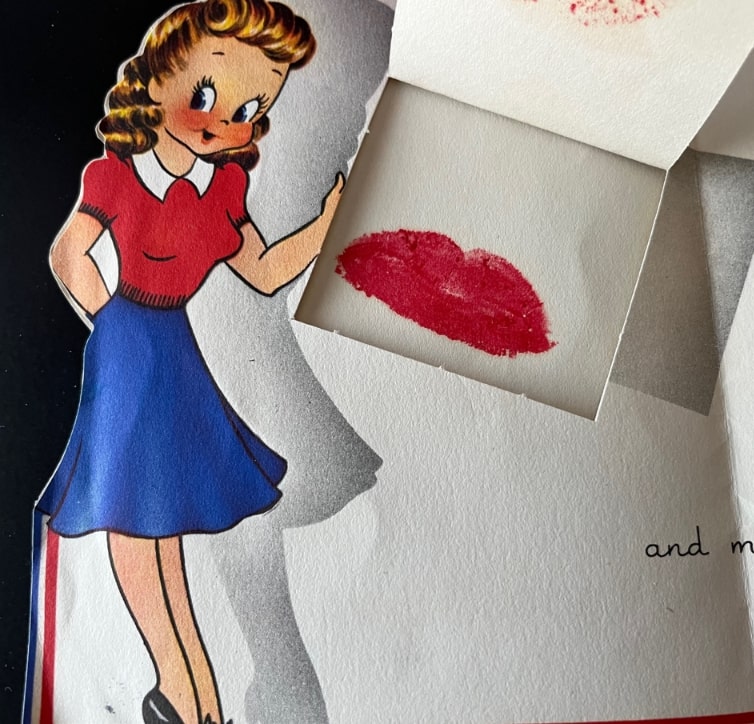
In some cases, the cards sent did not include a valentine’s greeting but instead reminded the solder that they were loved – like this example sent for Valentine’s Day 1944 that included patriotic colors and a place for the female sender to include a lipstick kiss. (2)
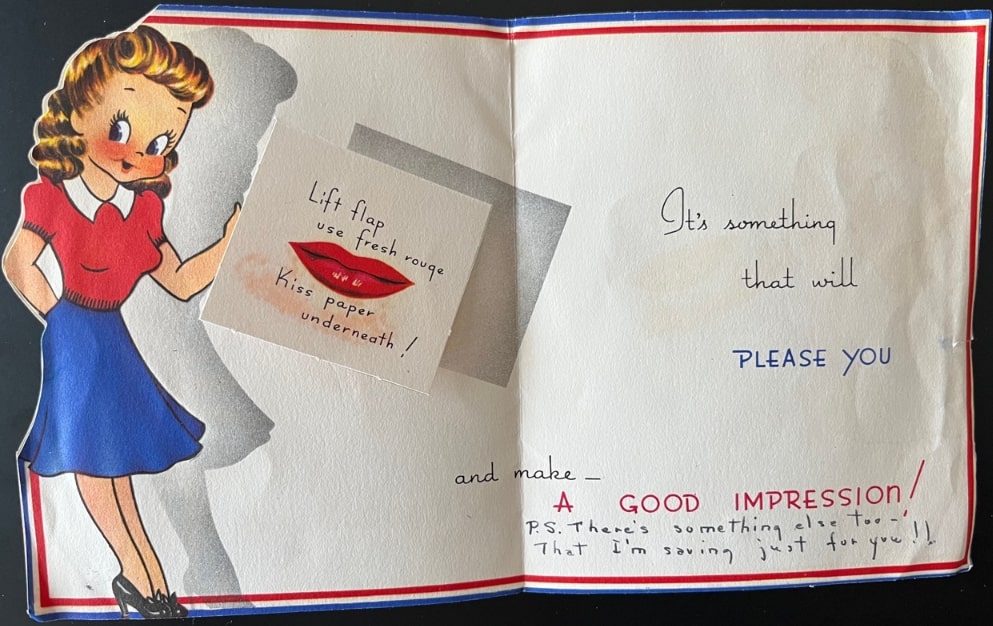
Researching about our ancestor’s Valentine’s Day is one way to remember them. Even if you have not inherited valentine cards, historical newspapers help us better understand what Valentine’s Day was like during a specific year.
Happy Valentine’s Day!
Explore over 330 years of newspapers and historical records in GenealogyBank. Discover your family story! Start a 7-Day Free Trial
Note on the header image: a heart with “Love” in the middle.
_______________
(1) “Love—Guess Who! Valentine’s Letters from World War II,” The National World War II Museum (https://www.nationalww2museum.org/war/articles/valentines-letters-world-war-ii: accessed 30 January 2024).
(2) From the John Milo Thomas and Marjorie Payne Thomas Letter Collection. In the possession of Gena Philibert-Ortega.
